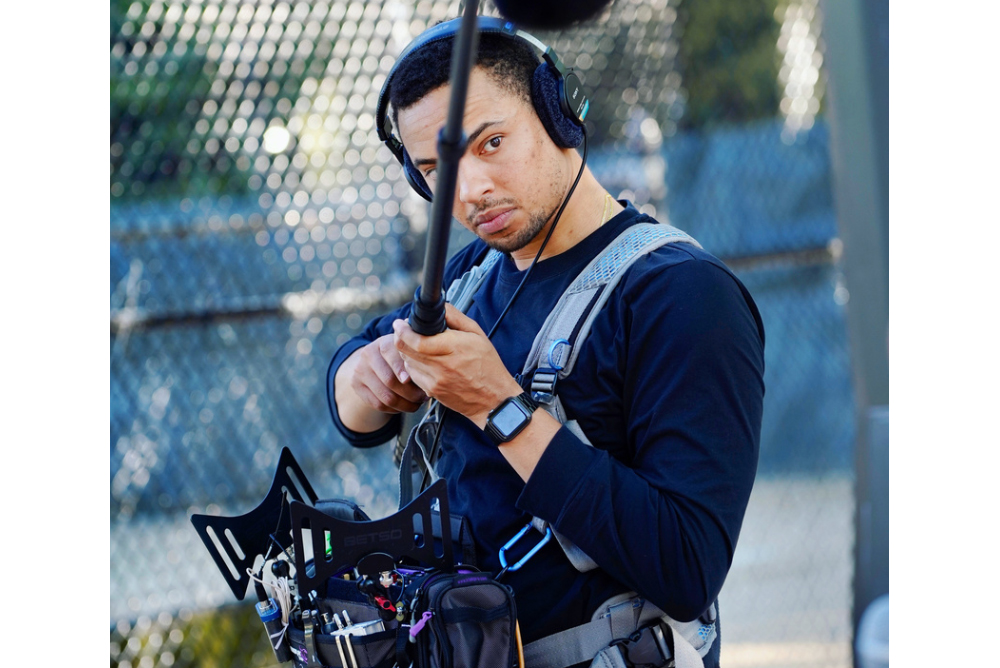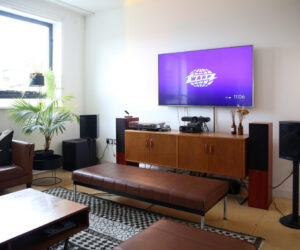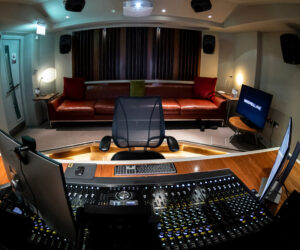Freelance sound mixer Henry French, who captures the action of commercials, independent films, and TV series based in New York City, which he describes as “a completely different grind” compared to the more measured cadence of production of other places, utilizes a toolkit incorporating numerous Lectrosonics components, starting with UCR411 series receivers and cycling through Digital Hybrid transmitters including the SMV and SMQV, and now the digital, four-channel DSR4 receiver paired with DBSMD transmitters.
French’s credits as mixer, boom operator, or recordist include the feature film A Shot Through the Wall, the docu-series Bonded By Ball about hoops star Tracy McGrady’s Ones Basketball league, the short Transit: A New York City Fairytale, and The Oxy Kingpins, a documentary about the pharmaceutical industry’s role in America’s opioid crisis.
“About 10 years ago, I was in Washington, D.C. working in a data center,” French notes. “I had a friend, Olaitan Agueh, who was also a musician, and we had a lot of jam sessions together. I always wondered what he did for a living — turns out it was mixing. He brought me in to run boom and assist on A Shot Through the Wall, and I consider him my mentor, the guy who helped me break out of my nine-to-five life into what I do now.”
Agueh also facilitated French’s introduction to Lectrosonics: “We always geeked out together, talking about gear and techniques. He told me that in the film and TV world, Lectrosonics is the gold standard. My own using it over the years backs that up. I think part of the reason is that Lectro focuses only on wireless. Several other companies, whose stuff isn’t necessarily bad, ‘also’ do wireless on top of microphones, P.A., and other things.”
Although his DSR4 is a relatively recent acquisition, French reports that it has been very useful in the challenging RF environment of Manhattan. “I do a lot of work around Times Square and Columbus Circle,” he says. “RF-wise it’s just a zoo. Cell towers, 5G, Wi-Fi of shops on the street, and even others on set using wireless, such as Hollyland rigs for video. I really appreciate how quickly I can scan on the DSR4. It always finds and holds on to frequencies no matter how packed the airwaves are.”
He points to two features of the DSR4 that are particularly relevant to the RF environment of inner-city production. “First, each day I show up on set I do a fresh scan using the SmartTune function, to see if anything about the frequency landscape has changed overnight,” he explains. “For each of the four channels, it will find the cleanest frequency band there is. I’ve worked NYC Fashion Week for [sneaker brand] Puma. You don’t necessarily know who you’re miking next or where you’ll be. You might hop in a cab to a different location across town and have a couple of minutes to get up and running. It helps that SmartTune is quick.”
Second is the wideband range of the DSR4, spanning the full legal spectrum of 470 to 608 MHz in North America. “I’m not locked into one block or another, which lets me adapt quickly,” explains French. “But it’s worth mentioning that you can limit SmartTune to specific blocks and that can be different for each channel. So, if I’m using an older transmitter — and the DSR is backward compatible with the SM series and even stuff way before that — I can tune inside the block that makes sense for it.”
The need for range and RF tenacity extends well beyond the big city. “One of the most difficult shoots I ever worked on was for a reality show called 5GRV: Gamers on the Road. It was a bus ride along the East Coast, featuring African American women who are also expert video gamers. They’re playing at all these HBCUs (Historically Black Colleges and Universities), and they’re also gaming while on the bus. Long story short, with Lectrosonics, I never had an issue with range, with dropouts, or anything like that.”
Once transmitters are placed, the DSR4 receiver is what French interacts with, and he highlights its user interface: “The ease of use of the menu system is another thing that’s great. I can see more information at a glance, in one place, and it’s not cluttered or confusing. That also goes back to having to be a quick-change artist. I don’t want to be fiddling with my gear while other people are waiting.”




















